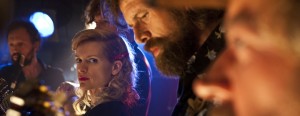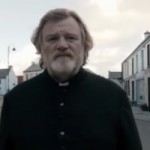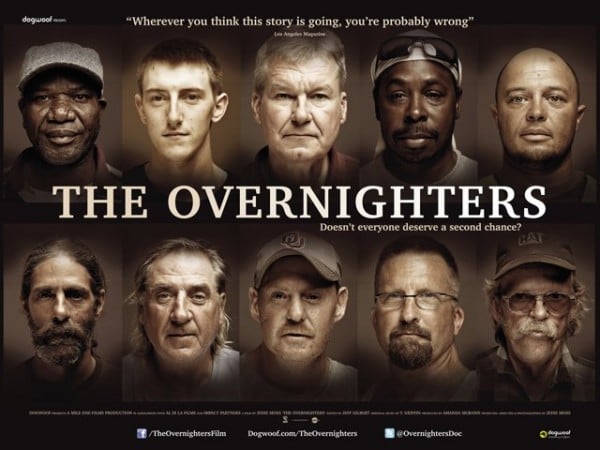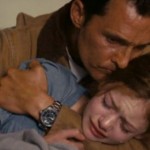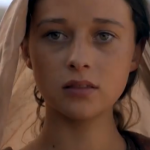
(Reader alert: This review contains full-on spoilers for “God’s Not Dead,” moderate spoilers for “Philomena,” and mild spoilers for “The Unbelievers.”)
As both a film viewer and writer, I vastly prefer celebrating the good to dissecting the lousy. So while I felt obligated to analyze God’s Not Dead, given its prominence on the American film scene this year, it’s high time to move forward and examine three far superior recent movies that prominently feature clashing believer and unbeliever characters. So, progressing from good to better to best, let’s go!
We’ll start with The Unbelievers, last year’s documentary that followed Richard Dawkins and Lawrence Krauss across Australia, England, and America on a speaking tour. For those unfamiliar with these two gentlemen, Richard Dawkins is the renowned evolutionary biologist and perpetual lightning rod for controversy, as one of the so-called “Four Horsemen” of atheism. His co-star Lawrence Krauss, the cosmologist director of Arizona State University’s Origins Project, has attracted increasing notice as author of A Universe from Nothing, in which he hypothesizes a means by which the Big Bang could’ve arisen from empty space (and by implication, without a divine hand).
Much as I hate to write this, The Unbelievers shares a few points of commonality with God’s Not Dead (GND). Both films contain debates in which the filmmakers’ opposites receive almost zero meaningful onscreen speaking time to stake their claims. In the case of The Unbelievers, Richard Dawkins schools the Archbishop of Sydney on human evolution and natural selection, while Lawrence Krauss challenges a Muslim apologist on his unquestioning acceptance of holy writ.
Additionally, both films deploy celebrities to makes their points of view sexier. GND uses the Newsboys and Duck Dynasty, while The Unbelievers is more stylishly bookended by black and white sound bites from famous skeptics such as Ricky Gervais, Werner Herzog, Cormac McCarthy, and Cameron Diaz. Score one point here for The Unbelievers, though I have to question its creators’ wisdom in placing Woody Allen into the mix, considering his notoriously icky extramarital conduct.
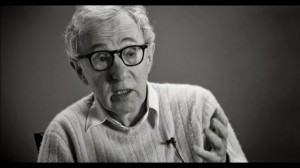
Both films also aim for nothing less than the demolition of their opposing viewpoints. Dawkins and Krauss make no bones about their desire to hasten the eradication of religion. Unlike GND, however, no theists are killed in the making of their movie. The Unbelievers are working to achieve their goal via the tools of reason, intellectual persuasion, and promulgating the gospel of wonder in science. Honesty compels me, however, to state that sometimes it’s hard to tell whether these Unbelievers truly love the sinner and hate the sin, judging by some of their dichotomous “us versus the enemies” talk.
Lastly, both films conclude on a triumphal note. Where GND climaxed with the simultaneous violent death of its godless villain and a contemporary Christian music concert, The Unbelievers culminates in the 2012 Reason Rally, where an estimated 30,000 gathered on the National Mall for history’s largest gathering of skeptics and humanists.
Despite these similarities, I’m far more inclined to cut The Unbelievers some slack for its shortcomings. For one thing, this film provides a sound if brief overview of some of the best arguments for secular humanism, urging a move from fatally flawed, fear-based dogma to an intellectually satisfying and joyous embrace of the here and now. Additionally, while GND creates a bogus America in which Christians suffer intolerable persecution, The Unbelievers furnishes welcome inspiration for a minority group whose individuals often do undergo shunning and shaming from their families and communities.
Unfortunately, The Unbelievers would’ve benefitted from a perkier tempo. We could’ve done without some of the travel filler, even if accompanied by cool Radiohead and REM tunes; and watching Dawkins conduct a telephone interview from his hotel room fails as compelling must-see footage. I would’ve preferred more time allotted to the give-and-take among Krauss, Dawkins, and their theistic debating partners.
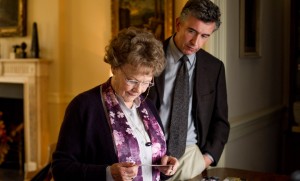
The next film for consideration, Philomena, succeeds as a much brisker storytelling venture. Its title character, Philomena Lee, was one of the tragic girls who endured years of indentured servitude in a Roman Catholic Magdalene institution, thanks to her sin of becoming pregnant out of wedlock. While an unwilling resident of the Sean Ross Abbey in Ireland, Philomena was forcibly separated from her toddler son Anthony, who was given to an American family for adoption.
After decades of keeping her son’s existence a secret, Philomena decides to break her silence about her hidden past on her son’s 50th birthday. Enlisting the aid of unemployed journalist Martin Sixsmith to try and locate Anthony, their search takes them from London to Ireland to Washington, D.C., and back again to Ireland.
Happily, director Stephen Frears utilizes an unobtrusive style that doesn’t interfere with the momentum of his suspenseful tale (just as we saw in his comparably excellent movie, The Queen). And Philomena’s two lead actors – Judi Dench as Philomena, Steve Coogan as Martin – offer up some of the best work of their careers in this film.
Frears’ film serves as a fine example of the tried and true movie genre of “mismatched duo on a questing journey.” Dench’s character, despite her youthful travails, has persisted in her devout faith, and is openhearted, unsophisticated, and predisposed to see only the best in people she encounters. Martin, on the other hand, is a cynical, worldly atheist, who insensitively presses to extract the truth from even the most unwilling subjects.
Unsurprisingly, each character substantially alters the other by film’s end. Most notably, in a superb climax, Philomena both stays true to her kindly self in forgiving those who’ve harmed her, yet also acquires some of Martin’s tenacity and journalistic commitment, in determining that his readers need to learn the truth of her church-inflicted trauma.
I’m in agreement with Philomena: her story demands telling. Some Catholics have questioned the utility of this film, claiming it unnecessarily dredges up old skeletons. But considering it was only last year that the Irish government officially apologized for its collusion in the Magdalene system and began the process of compensating its victims (while Roman Catholic orders so far have only proffered tepid, blame-the-victim pseudo-apologies), this scandal deserves wider knowledge.
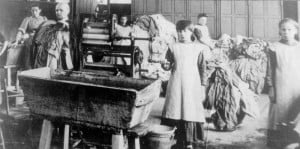
Like any “based on a true story” movie, Philomena takes liberty with its primary source material, Sixsmith’s original book entitled The Lost Child of Philomena Lee. While the literary work emphasized Anthony’s life story and spent little time on Philomena’s quest, the movie takes the opposite tack. Nonetheless, having read Sixsmith’s book, I can say the film fairly represents Philomena and Anthony’s experiences in the Magdalene system. I would even go so far as to state that the widespread abuse and exploitation of so many young females, the forcible separations from their children, and the adoption of thousands by unvetted American Catholic families for a generous “donation” are actually soft-pedalled by the movie version.
Much as I esteem Philomena, a truly great film such as The Broken Circle Breakdown reveals the former movie’s relative deficits. Although I felt affection for Martin and Philomena, they are merely types in comparison to the thoroughly fleshed out protagonists of The Broken Circle Breakdown.
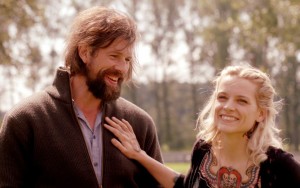
Emerging from Belgium and a finalist for this year’s Best Foreign Film Oscar, Broken Circle savvily shifts backward and forward in time to tell its tale of the love between Didier and Elise. Didier dwells simply in a ratty camper on a farm, playing banjo for a spunky bluegrass band, when he meets Elise, a tattoo artist. We watch them fall hard for each other, raise their daughter Maybelle (as in Maybelle Carter, of course), and struggle with the devastation heaped upon them by Maybelle’s cancer diagnosis. “Will the circle be unbroken?” becomes the pivotal question, as Didier and Elise fight to keep their marriage and sanity intact, as their daughter fights to survive.
This is only the fourth film directed by 37-year-old Felix van Groeningen, yet he conveys the passion felt by this couple with an immediacy and intensity that is a rare, cherished treasure in moviegoing. Frankly, my fiancée and I were both emotional wrecks for days after seeing Broken Circle, so deep was the empathic connection we experienced with these characters.
Groeningen and his cast also handle the question of spirituality with a welcome light touch. Elise cherishes the Christian faith of her family, nicely symbolized by the cross necklace she bestows upon Maybelle, a gift passed on for generations from mother to daughter. On the other hand, Didier possesses a moderately more outspoken atheism.
Unlike the characters in the other films I’ve mentioned, however, neither Didier nor Elise wield their worldview as a blunt instrument. We see this plainly when Maybelle, happening upon a dead bird, asks her father where the bird went after it died. He elects not to answer her directly, gracefully permitting her to hold onto her belief that it became a star. Only in the following scene of dialogue with his wife do we hear his own perspective on this query, as he satirically expounds upon diverging Christian, Muslim, and atheist views on the post-death fate of the avian deceased.
Only, too, when Didier and Elise’s marriage is near foundering do their disparate worldviews become a point of contention. Even then, it’s agonizingly evident that their clamorous disagreement is a symptom rather than cause of their marital disharmony.
It is much to the director’s credit that he never tips his hand as to whose side he favors, either. While Didier gets the best lines, especially in a desperate rant that borrows heavily from Dawkins’ The God Delusion, the music definitely tilts towards a theist perspective. This would signify little in most films, but Broken Circle powerfully utilizes music to drive its narrative forward more than any movie in recent memory. Therefore, when the closing credits roll to the accompaniment of the classic spiritual, “Where the Soul of a Man Never Dies,” we the viewers need to pay serious attention.
Summing up these recent film-viewing experiences, I offer a couple of observations. Based on God’s Not Dead and Philomena (not to mention Cormac McCarthy’s The Sunset Limited, a film too flawed to merit a full review), we atheists are in danger of being typecast as bitter depressives. It appears, too, that we Americans haven’t progressed far beyond our Wild West hankering for winner-take-all showdowns.
Reflecting upon the gentler spirit of The Broken Circle Breakdown, I recall, too, that the most sublime Christian allegories of the past decade also emerged from Europe, by way of Norwegian director Erik Poppe’s lovely Hawaii, Oslo and Troubled Water. For rescue from stereotypes and scorched earth worldview propagation, I can’t help but wonder if we need European filmmakers to lead us to a healthier way.
The Unbelievers: 3 out of 5 stars
Philomena: 4 out of 5 stars
The Broken Circle Breakdown: 5 out of 5 stars
(Parents’ guide: I recall nothing from The Unbelievers that would shock or disturb younger viewers. Philomena is rated PG-13 for some strong language, thematic elements, and sexual references, and is appropriate for mid-range teens and older. Given the steamy love scenes and very intense subject matter of The Broken Circle Breakdown, I would feel uneasy watching it with any but the oldest and most mature teens.)
Postscript: I’m hearing that a more recent release, Calvary, may warrant inclusion with this set of movies. Once Calvary is playing nearer to my home than 101.3 miles (as Moviefone informed me this afternoon), I plan to check it out.

